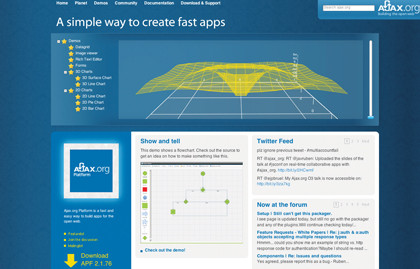Highs and lows of a decade in web design

As the clocks rang in the year 2000, things were looking good. The dotcom boom was in full swing and web designers were the new rock stars.
But then, barely before the champagne had time to go flat, things took a nasty turn.
The boom turned into bust as investment disappeared and tech firms went to the wall. Boo.com, launched in autumn of the previous year, was one victim, going bankrupt in May 2000 after spending its way through more than £80million.
Over the following two years, around $5trillion was wiped off the market value of tech companies. Pets.com folded in November 2000. eToys, with an IPO share price of $80, was to go bust in March 2001, and internet currency site Beenz.com went under in the same year.
Paul Wyatt, designer and writer, describes the start of the decade as one "where everyone became a web designer and the world and his wife had a good idea to make a million on the web". But it wasn't to last.
Paul Boag, creative director at Headscape, remembers the time well: "I first started in the web back in 1994," he says.
"By the turn of the century I was working at a dotcom company at the height of the boom. I remember being told that I would soon be a millionaire. Even at the time this struck me as insane. Like so many dotcoms, the company I worked for was built on hype and had no real business case. It was obvious to me that in reality the company was worthless."
Sign up for breaking news, reviews, opinion, top tech deals, and more.
Born again
But out of these ashes would come a reborn, more efficient industry. "The dotcom bust left a lot of talented people out of work, and in this downtime they started to experiment and innovate," says Boag. "We soon saw dramatic shifts in how the web is built, including the birth of the web standards movement and the reinvention of JavaScript.

WEB STANDARDS: The Web Standards Project has fought for the guidelines that make the web so accessible today
"What we're left with is a much more stable platform. It's easier and cheaper than ever to build great web apps without the need for external investment. What would have cost hundreds of thousands to develop back in 2000 is now available free through third-party APIs and libraries."
"The web has truly matured over the past decade," agrees Usman Sheikh, managing director of Contrive Digital. "We've seen businesses starting to understand and harness the power of the internet to support their operational and commercial objectives.
"Ecommerce is no longer a luxury only the larger retailers can afford. With great open source and feature-rich platforms arriving in the market, we've seen smaller retailers give the big boys a run for their money."
Dynamic sites
"I think the most significant change in web design this decade has been the evolution to building dynamic sites," says Chris Coyier of CSS Tricks. "A friend of mine is an IT guy/web admin at a university, and he has students coming to him all the time asking for help building sites for a project. He just tells them, 'Go to WordPress.com and you'll have a site up in no time'.

WORDPRESS: WordPress has been criticised for stunting creativity by encouraging people to follow similar templates
"That answer in the early 2000s would have been 'I hope you're up for learning some HTML. Now, open Microsoft FrontPage...' The process was confusing and the student would have probably given up. Today it's almost a no-brainer."
But there is a downside to this, as Craig Grannell, a regular contributor to .net magazine and TechRadar, points out: "Because of the relative simplicity of the likes of WordPress, there's still the assumption that web design is simple and therefore designers should be charging about a fiver for an all-singing, all-dancing website."
Shane Mielke, creative director at 2Advanced Studios agrees: "Flash templates, while a useful and cost-effective solution, have degraded the credibility of those of us who design and develop custom solutions for clients. I think the adoption of WordPress and templated portfolio communities has also marked a low point as there seem to be fewer unique personal sites being released with that wow factor that was present earlier in the decade."

AJAX: Ajax has been instrumental in making web apps useful and accessible to all
Flash had a bit of an image problem at the start of the decade, being viewed as inaccessible and a waste of bandwidth. "There was a tendency for designers to get carried away and create experiences that alienated those without the faster connections," remembers Rob Corradi, creative director at NeonState.
"Flash is still overused and poorly used, although not as much as it was in the mid-2000s, when lots of idiots suggested that Flash should be 'it' for web design," adds Grannell. "Flash has always been great for certain things, but I was relieved when JavaScript libraries started taking over from Flash when it came to UI elements.
"Bandwidth hogging and waste remains a huge issue, though. Many designers are fat and lazy, pumping out bandwidth-intensive output that works fine on their set-ups, but that could be faster and sleeker with relatively little effort."
After watching War Games and Tron more times that is healthy, Paul (Twitter, Google+) took his first steps online via a BBC Micro and acoustic coupler back in 1985, and has been finding excuses to spend the day online ever since. This includes roles editing .net magazine, launching the Official Windows Magazine, and now as Global EiC of TechRadar.